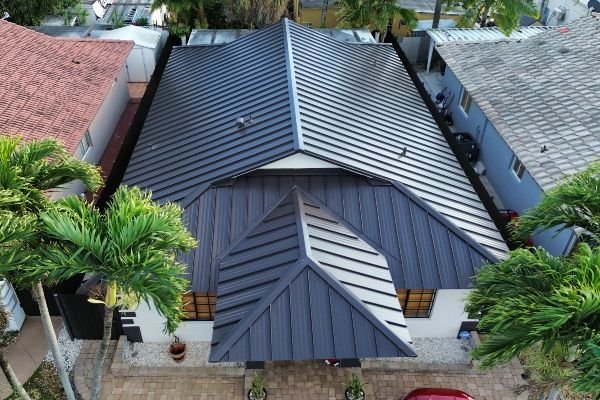“How long does a roof last?” This is one of the most common questions we hear from homeowners across Florida. And it’s a valid concern! With the intense heat, relentless sun, and frequent storms, roofs in Florida face unique challenges that can shorten their lifespan compared to other regions. Understanding these factors is key to ensuring your roof lasts as long as possible while keeping your home protected year-round.
Roof Lifespan by Material
The type of roofing material you choose for your Florida home plays a significant role in how long it will last. While no roof is immune to Florida’s weather conditions, some materials perform better than others:
- Asphalt Shingles: A common and cost-effective option, asphalt shingles typically last between 15 to 20 years in Florida. However, due to intense sun and storms, their lifespan is shorter compared to other regions.
- Tile Roofs: Known for their durability, tile roofs can last anywhere from 25 to 50 years, or even longer with proper maintenance. These roofs are popular in Florida for their resilience against the state’s high winds and storms.
- Metal Roofs: A metal roof can last between 40 to 70 years, making it one of the longest-lasting materials in Florida. It’s highly durable and resistant to rust, though homes near the coast may need more frequent maintenance to guard against saltwater corrosion.
Understanding the specific lifespan of each material helps homeowners make informed decisions and plan for roof maintenance or replacements in Florida’s harsh climate.
Key Factors that Affect Roof Longevity in Florida
In Florida, roofs face a unique set of challenges that can significantly reduce their lifespan. The most impactful factors include:
- Weather: The intense heat, UV rays, and frequent storms, including hurricanes, cause wear and tear faster than in other regions.
- Saltwater Exposure: Homes near the coast are more prone to damage from salt spray, especially metal roofs, which require more frequent maintenance.
- Proper Installation and Materials: Choosing high-quality materials and ensuring professional installation can greatly extend the life of your roof, making it better equipped to handle Florida’s harsh conditions.
How to Extend the Life of Your Roof
While Florida’s weather can be harsh, there are steps you can take to extend the lifespan of your roof:
- Routine Maintenance: Schedule annual inspections to catch minor issues before they turn into costly repairs.
- Debris Removal: Keep your roof clear of leaves, branches, and other debris that can trap moisture and cause damage.
- Proper Ventilation and Insulation: Ensure your attic is well-ventilated to prevent humidity buildup, which can lead to rot or mold.
Taking these proactive measures will help maximize your roof’s durability in Florida’s climate.
Signs You Need a Roof Replacement
Over time, even with proper maintenance, roofs will eventually need to be replaced. Some telltale signs include:
- Leaks Inside the Home: Water spots or moisture in your ceiling indicate that your roof may no longer be providing adequate protection.
- Curling or Missing Shingles: Asphalt shingles that are curling or broken tiles are clear signs that the roof is deteriorating.
- Mold or Excessive Moss: Growth of mold or moss on your roof can indicate trapped moisture, leading to further damage.
Addressing these issues early can prevent more costly repairs down the road.
Conclusion: Plan Ahead for Roof Replacement
In Florida, waiting until your roof fails could lead to costly repairs and extensive damage, especially with hurricane season always around the corner. By keeping an eye out for the signs of aging and taking proactive measures, such as regular inspections and maintenance, you can extend the life of your roof and avoid sudden, expensive replacements. At Green Roofing & Solar, we offer flexible financing options to help you upgrade or replace your roof without breaking the bank. Contact us today for an inspection and take the first step toward protecting your home!

